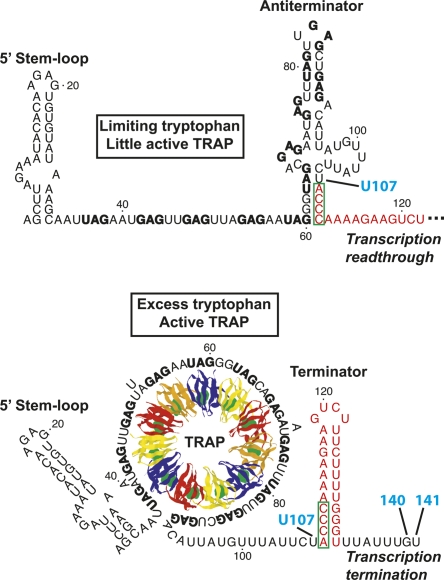FIGURE 1.
Model of the B. subtilis trpEDCFBA operon transcription attenuation mechanism. (Top) When tryptophan is limiting, TRAP is not activated and therefore does not bind to the nascent trp leader transcript. Thus, the default conformation of the trp leader RNA, which includes the 5′SL and antiterminator structures, allows transcriptional readthrough. (Bottom) When tryptophan is in excess, TRAP becomes activated by tryptophan and binds to the triplet repeats in the nascent transcript. Bound TRAP prevents formation of the antiterminator and favors formation of an intrinsic terminator hairpin, which stops RNA synthesis at G140 or U141, before the transcribing RNAP reaches the coding sequence of the downstream structural genes. Since the (boxed nucleotides) antiterminator and terminator structures overlap, the two structures are mutually exclusive. Pausing of RNAP at U107, the nucleotide just preceding the 4-nt overlap between the antiterminator and terminator structures, presumably allows more time for TRAP to bind to the nascent transcript and promote termination (Yakhnin and Babitzke 2002; Yakhnin et al. 2006a). (Red) Nucleotides that form the terminator hairpin; (bold type) the (G/U)AG triplet repeats.

